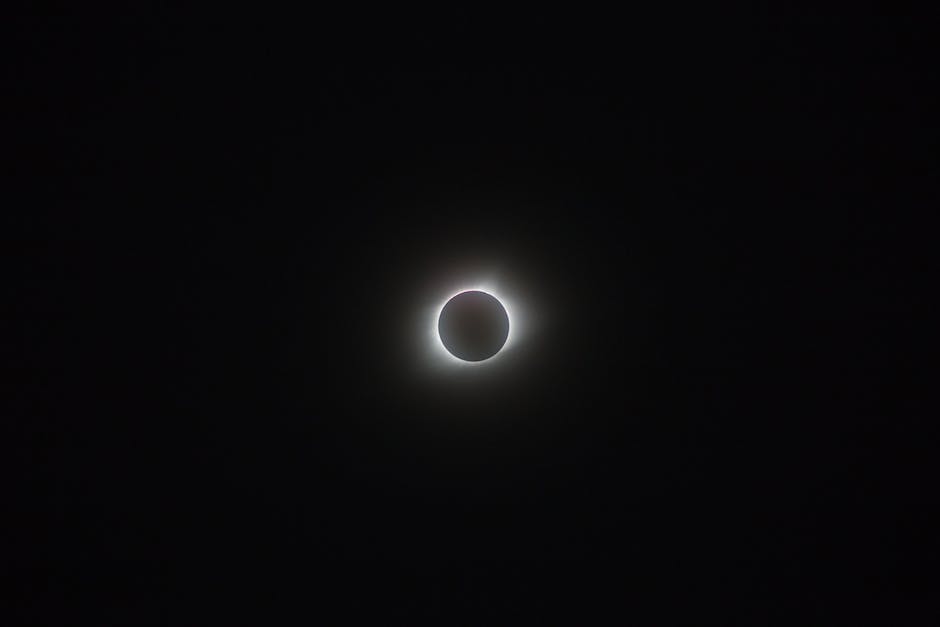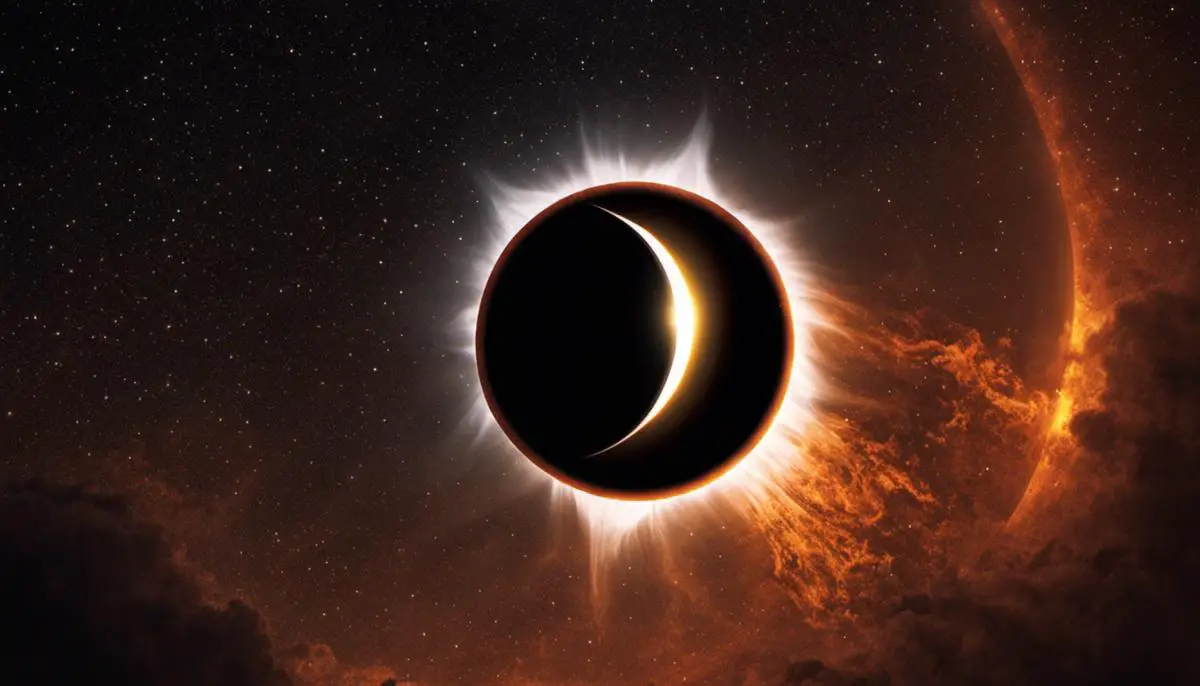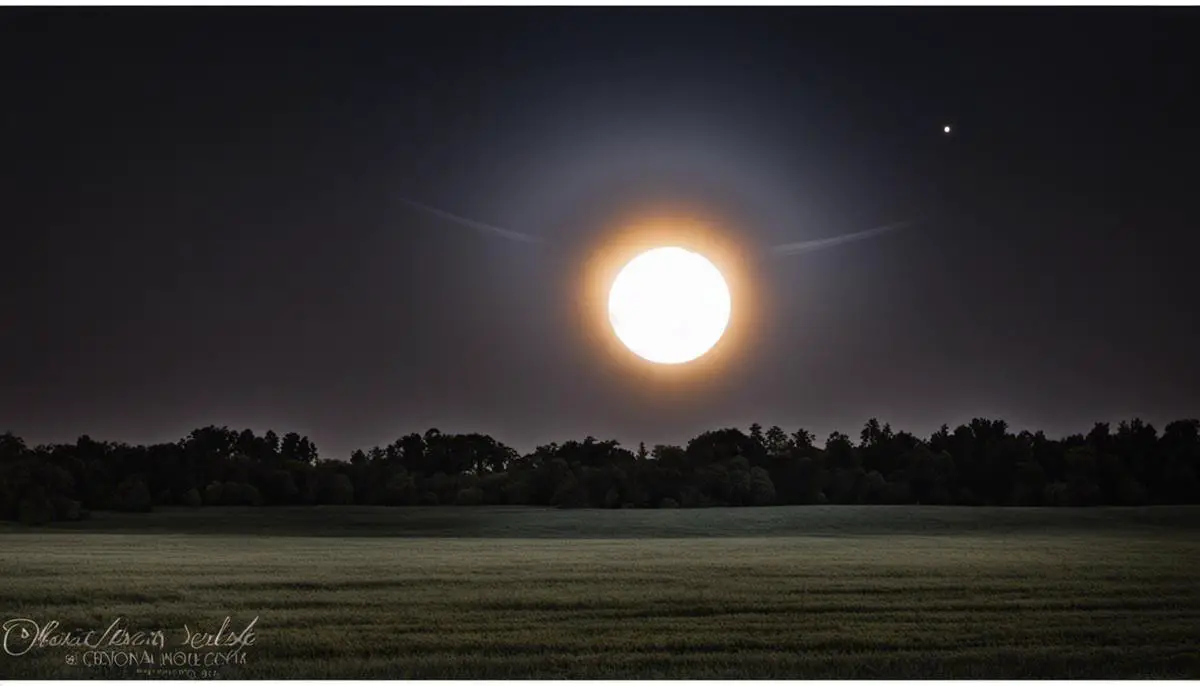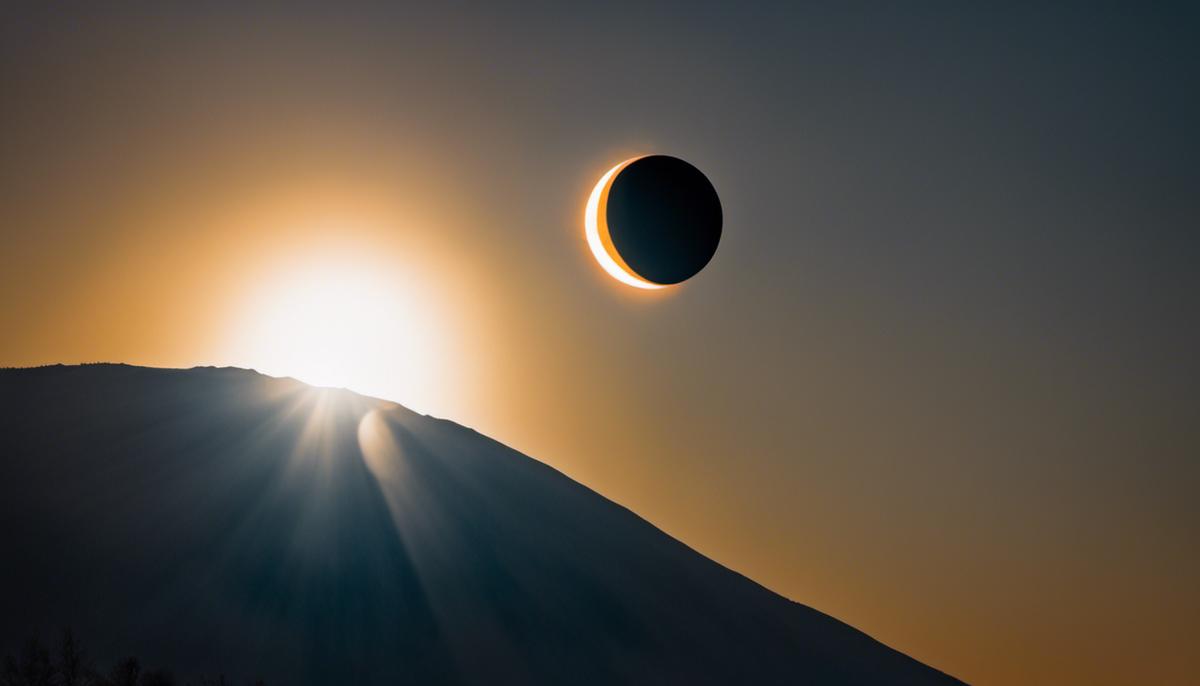As we patiently anticipate the arrival of the 2023 solar eclipse, it’s crucial to understand not only the scientific phenomenon of the event itself but also how to safely enjoy and possibly capture it. This spectacle, while awe-inspiring, brings with it certain precautions we need to take to ensure our safety. Throughout this discussion, we dive into the distinguishing traits of the 2023 solar eclipse, exploring why it commands such interest. Additionally, we shed light on the different protective equipment needed to observe the eclipse, emphasizing the importance of careful viewing just as much as the enjoyment of the event. Finally, to encapsulate this celestial experience, we navigate the world of eclipse photography, introducing techniques and necessary gear to capture these special moments impeccably.
Understanding Solar Eclipse 2023
An Exploration into the 2023’s Solar Eclipse: An Unprecedented Astronomical Spectacle
The cosmic ballet of celestial bodies presents itself in numerous wondrous ways, one of which is an eclipse. In this unique spectacle, the dynamics of the solar system intricately manifest in the temporally synchronized movements of the Sun, the Moon, and the Earth. Mark your calendars for October 28, 2023 – the anticipated date for the next total solar eclipse. There is a sense of trepidation and excitement amongst the astronomical community, as this event brings multi-tiered layers of scientific intrigue.
A total solar eclipse is a phenomenon wherein the Moon traverses its orbit between the Earth and the Sun, temporarily obscuring our star’s radiant light, welcoming an ethereal twilight during daylight hours. This occurrence houses profound scientific interest owing to its rarity. The observable heavens present a comprehensive display of solar corona – the sun’s exotic outer atmosphere, unmasking treasure troves of knowledge begging to be explored.
The 2023 solar eclipse, however, sets itself apart from its predecessors by one crucial aspect – its path of totality. The path of totality refers to the geographical swath on Earth’s surface where the solar eclipse can be experienced in its full splendor. The path for 2023 is particularly remarkable as it primarily graces over the American Southwest, offering a highly accessible viewing corridor for an impressive number of observers. It is hoped this accessibility will inspire unprecedented public participation, engagement, and advance our collective understanding of our sun.
Another feature lending uniqueness to the 2023 eclipse is its hybrid nature, classifying it as an annular-total (A-T) eclipse or a so-called ‘ring eclipse.’ Typically, solar eclipses are either total (where the moon fully occludes the sun) or annular (where the moon covers the sun’s center, leaving a radiant ‘ring of fire’ along its edges). The 2023 phenomenon harmonizes these typically distinct expressions into a single spectacle – an annular eclipse gradually transitioning into a total eclipse. This hybridity is attributed to the varying distances of the Earth from the Moon and the Sun during the occurrence. The perceived sizes of these celestial bodies from the Earth’s viewpoint cause this synchronistic dance of shadows, offering unparalleled observational opportunities.
Investigating such stellar phenomena through research and observation can yield profound insights into the vibrational characteristics of the solar corona, a component of the sun whose understanding remains elusive. Studying the 2023 eclipse may shed light on the Sun-Earth climatic connections and the mystery of solar wind acceleration – a deep-seated conundrum in the science of astrophysics.
For the layperson and scientist alike, the 2023 eclipse is not merely a marvel to behold, but a gateway into a deeper understanding of our solar system’s complexities. With its hybrid nature and unusually accessible path of totality, it promises rich opportunities for both scientific advancement and public astronomical engagement. Mark this celestial spectacle in your astronomical almanacs and ready your solar filters for a journey to the heart of our Sun.

Safety Measures for Solar Eclipse
The physical phenomenon that is a solar eclipse, particularly one of a hybrid variety such as the 2023 occurrence, demands a meticulous approach to safety and welfare. As the extraordinary event unfolds, individuals must heed the potential harm that direct exposure can inflict on the human eye. Therefore, clear, preventative measures should be implemented to ensure the safe viewing of this remarkable celestial spectacle.
First among these measures is the necessity of protective eyewear; one’s usual sunglasses are insufficient against the intensity of the sun. Instead, one needs solar viewing glasses or solar filters, specifically designed to shield the eyes from harmful solar radiation. This eyewear meets the ISO 12312-2 international standard, signifying their capacity to filter out both ultraviolet (UV) and infrared light, thereby protecting the retina from photic injury or “eclipse blindness”.
Similarly, the use of telescopes, cameras, and binoculars require additional precaution. These devices are designed to accumulate light, consequently amplifying the danger when pointing directly at the sun. As such, appropriate solar filters must be placed over the lens to safeguard against irradiation. It is crucial to ensure the filter is securely fixed and checked for any damages before use to evade any inadvertent exposure to raw sunlight.
Moreover, the misuse of these filters can lead to dire consequences. For instance, placing a filter to your eyepiece rather than to the device’s objective lens can result in the filter cracking from the gathered heat, leading to potential ocular damage.
Those who plan to view the solar eclipse indirectly may employ a pinhole projector, a safe and straightforward tool. This device – often made from simple materials like paper plates or cardboard – enables the observer to watch the projection cast by sunlight passing through a minute hole onto a surface, thereby eliminating the risk of direct solar ocular exposure.
As the eclipse reaches totality – the fleeting moment when the new moon wholly obscures the sun, revealing a breathtaking solar corona – a brief lapse in these precautions is permissible. The spectacle can be viewed directly, given the sunlight is sufficiently diminished. However, the resumption of harsh sunlight can occur abruptly making it necessary to restore safety protocols swiftly.
Ultimately, the chance to observe a total solar eclipse is a rare privilege that holds intriguing scientific implications while igniting public fascination. Yet, intertwined with its breathtaking beauty is an inherent hazard that should not be ignored. Recognizing the need for scrupulous precautionary procedures during these remarkable events is essential in preventing potential harm, thereby fostering an environment in which celestial enchantment may be safely indulged.

Photographing a Solar Eclipse
As we delve into the specifics of photographing a solar eclipse, it’s paramount to understand the importance of achieving a balance between capturing the scientific nature of the event and maintaining personal safety. Solar eclipses, a captivating phenomenon for observers, follows intricate mechanics of celestial motion, which includes the use of specialised equipment to safely observe and photograph this astronomical event.
There are varied techniques that can be utilized for photographing a solar eclipse, which rely heavily on the type of equipment at one’s disposal. Equally important is understanding how to appropriately use this equipment under the unique and challenging conditions posed by a solar eclipse.
Firstly, considering the high-intensity sunlight that characterizes these occurrences, it is unequivocal that a solar filter is indispensable for the photography process. It is crucial with any observational equipment – be it a telescope, binocular or camera – a solar filter must be securely attached to the front of the lens to intervene the sunlight before it enters the optical system. Always ensure to meticulously inspect these filters for any possible damages or scratches before use, as any fallacy could lead to the harmful radiation penetrating the optics and subsequently, your eyes.
Although this may appear contradictory, an absence of filters on the camera is warranted specifically during the brief period of totality. The crucial phase, where Sun’s corona becomes visible as a spectral halo encircling the moon, may last for a mere fleeting few minutes, during which taking off the solar filter from the camera enables capturing the intricate details of this majestic phenomenon. However, maintaining vigilance for the abrupt end of totality is essential, with the filter needing to be swiftly replaced to repel the intense light that ensues.
Apart from safety measures, knowledge of certain photographic elements can enhance the quality and detail of images captured. The use of a telephoto lens or a telescope adapter can help in capturing close-up detailed images. A sturdy tripod is a must to eliminate any movement during photography and ensure sharp images.
Furthermore, advanced planning can be beneficial. Preliminary testing of equipment, practicing focusing, and framing well in advance will familiarize oneself with the procedure, resulting in a smoother photography process during the short-lived actual event.
Additionally, knowing where the eclipse will be in the sky can guide setting up the camera and stabilizing equipment. Resources such as interactive maps and smartphone apps can accurately predict the path of the eclipse, facilitating improved preparedness.
Last1y, consider any post-processing that images might need. Although optional, post-processing can help to highlight the brilliance of the corona and bring out prominent features of the eclipse, creating a memory that will last a lifetime.
While photographing a solar eclipse is indeed an exhilarating experience both scientifically and aesthetically, attributing equal importance to safety practices is non-negotiable. Remember, responsible participation fuels scientific discovery while promoting public enjoyment and engagement in these rare celestial events.

As we pioneer through the mesmerizing world of celestial phenomena, it becomes clear that being well-versed in the technicalities goes a long way in enhancing our overall experience. Having knowledge about what sets the 2023 solar eclipse apart allows us to fully appreciate it. By adhering to recommended safety measures during the event, we can simultaneously protect ourselves and enjoy the spectacle. Lastly, with guidance on photographing an eclipse, those spectacular moments can be commemorated forever. So, with your knowledge, equipment, and enthusiasm in hand, you’re all set to witness, enjoy, and capture the solar eclipse of 2023.
![]()
